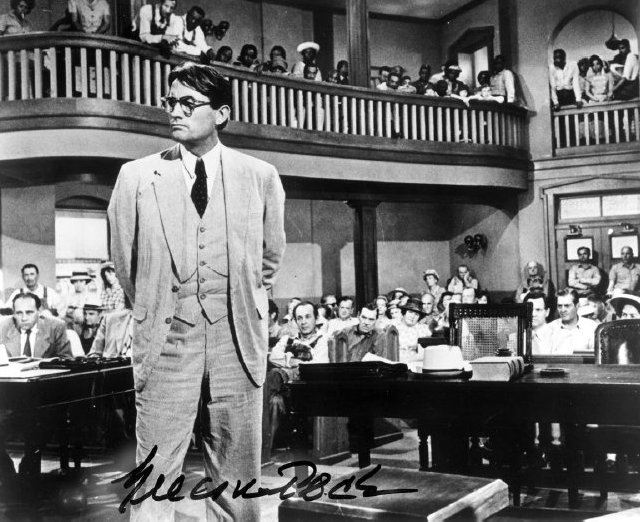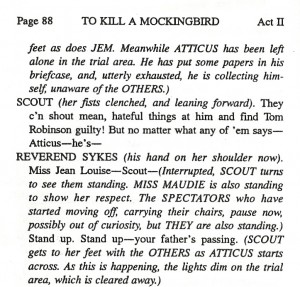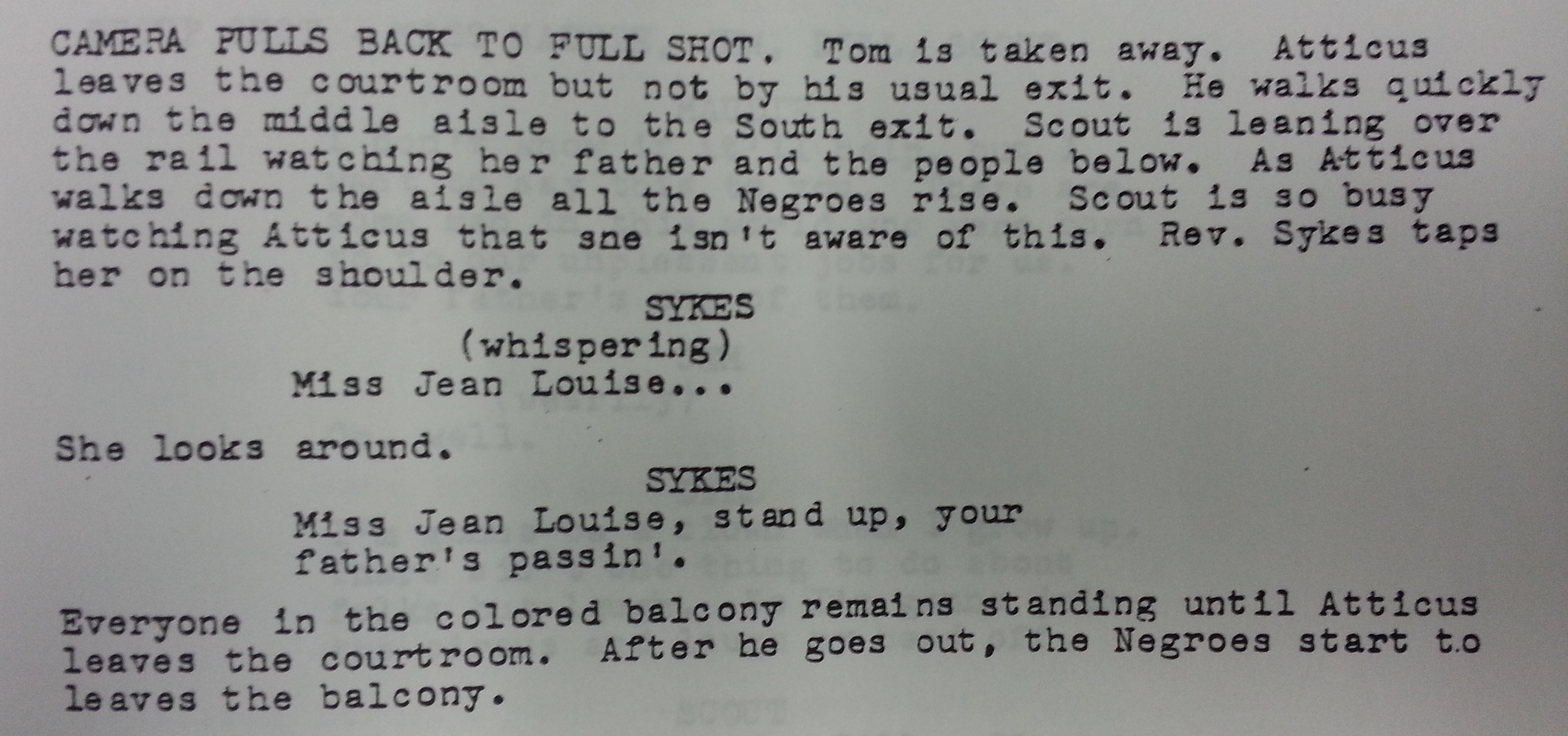Lesson Plan: Creating A Floor Plan for “To Kill A Mockingbird” Courtroom Scene
Developed by Frank W. Baker, Email: fbaker1346@aol.com

The new Common Core ELA Standards make a direct reference to film in 8th grade:
“Analyze the extent to which a filmed or live production of a story or drama stays faithful to or departs from the text or script, evaluating the choice made by the director or actors.”
So here is an activity that you might be able to use in support of that standard. The activity involves a scene from the novel “To Kill A Mockingbird.” In this scene, set inside the courtroom, Atticus has just lost the case and his client, Tom Robinson, has been led out to jail. Author Harper Lee has been quoted as saying that she sat in the balcony of the Monroeville, Alabama courthouse many times, watching her father argue cases, so this scene might have some basis in fact.
The activity asks participants to assume the role of the director who must decide how to photograph (film) this scene.
Participants will first read the scene directly from the novel:
NOVEL VERSION:
| The lower level of the courtroom empties but the upper level, filled with black people, stand and wait for Atticus to depart. The black spectators respect Atticus for his effort and his obvious convictions. Scout describes the scene: Someone was punching me, but I was reluctant to take my eyes from the people below us, and from the image of Atticus’s lonely walk down the aisle. “Miss Jean Louise? ” I looked around. They were standing. All around us and in the balcony on the opposite wall. ..the Negroes were getting to their feet… Reverend Sykes’s voice was as distant as Judge Taylor’s: ‘Miss Jean Louise, stand up. Your father’s passin‘.'” Pg 281, To Kill A Mockingbird, by Harper Lee, Copyright 1988, Grand Central Publishing |
Participants will next read the scene from the play:
PLAY VERSION:

Source: pg 88, Harper Lee’s To Kill A Mockingbird, by Christopher Sergel
Copyright, The Dramatic Publishing Company
Participants will next read the scene as it was written for the screenplay:
SCREENPLAY VERSION:
 Screenplay ©1963 A Pakula-Mulligan, Brentwood Productions Picture
Screenplay ©1963 A Pakula-Mulligan, Brentwood Productions Picture
Ask students: what is the same and what is different between the novel, the play and the screenplay? What elements do the novel, play and the screenplay include, exclude? Are other elements missing? If so, what are they? If your students were to re-write the scene, to include other elements, what might that look like?
Participants will
A) use a floor plan of the courtroom.
Below you will find the floor plan of the actual courtroom from the Monroeville Alabama museum. Attention should be given to what exactly are the quintessential elements of a courtroom. Is it described fully in the novel? If students have been paying attention, then they must know that there was a judge (seated at the judge’s bench); there was a jury (seated in a special area); that both the prosecution and defense sat at tables, separated by the crowd seated on the first level as well as the blacks relegated to the balcony.
B) strategically place “cameras” along the floor plan.
They can use large capital letter Xs to indicate that placement.
C) they will make a list of the shots each camera will get and storyboard (draw) those shots.
They should be as specific as possible.
They should be able to explain and justify why a camera has been placed where it.
What shot will that camera get? (jury, Atticus, Judge, balcony, Scout, etc)
What kinds of shots will they be and why? (wide, medium, close up)?
Will the cameras shoot up, down, both?
Will the camera move, if so how and when?
Cinematography Handouts; types of film shots; camera angles; camera movement
Storyboard: download this storyboard template for students to document their shots
Playing back the scene from the film
If possible, after students have created their floor plan and explanations, they can watch and study the way the scene was shot from the film. It can be found on the website MOVIECLIPS
http://movieclips.com/tmJG3-to-kill-a-mockingbird-movie-your-fathers-passing/
Have your students count the number of separate SHOTS.
Have your students consider how camera shots can be used to reveal point-of-view.
Have students consider the type of music used and how that music contributes to or takes away from the mood.
Now ask students to consider, after watching the scene from the film, what elements come to life on the screen that might not on paper in either the novel or the screenplay?
Helpful Handouts: The 5 Stages of Shooting a Film Scene
Cinematography Coverage – Film School Online
Actual Floor Plan: Monroeville AL Courtroom

Source: http://www.tokillamockingbird.com/uploads/MuseumGuide.pdf
Frame Grabs From The Scene: Stand Up Your Father’s Passing
 1 1 2 2 3 3 4 4 5 5 |
 6 6
|
TKAM Art Director Henry Bumstead’s Original Storyboard Drawings
Ask students to compare the boards (below) with the frame grabs from the film (above)


Source: Monroeville County Courthouse Museum
Share This Page:


 7
7 8
8 9
9